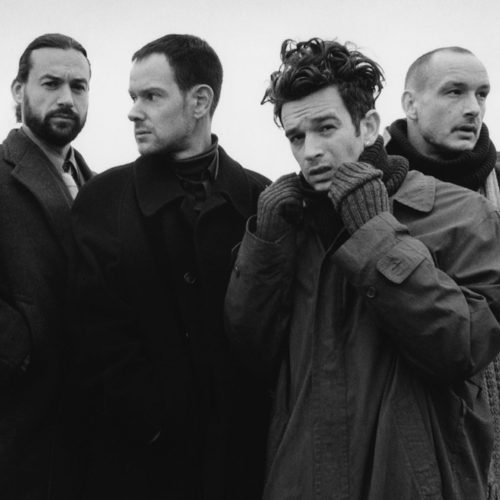The 1975 is the only alternative-pop band that isn’t trying too hard to sound like The 1975.
And of course that’s intentionally an overstatement, but I really do think it’s kind of true. And I think it can help us make better art.
Here’s what I mean.
I remember when their first full-length record came out in 2013, and the indie music world lost its collective mind. “Chocolate” was the catchiest song in a decade; “Robbers” was so full of passion that it physically hurt to listen to it; “Sex” was a car-blared head-banger for young adults who had outgrown Mayday Parade.
The drums and guitars were huge, but the pictures painted by the songs were small and intricate. The lyricism was for Matty alone, but it was also for everybody. The whole album carefully walked the tightrope between familiar and new. They were fully themselves, but it was clear that they had a deep and wide context of acts who influenced the music they were making. They were every band, everywhere, all at once.
And pretty soon, the current was set, and people started jumping into it.
Their first album started a space race in the indie pop world: whoever could sound the most like them was going to be successful. I went to a music school in Nashville, and during my freshman year, there were at least 5 bands who might as well have made it their mission statement. People who grew up in Ohio sung in a vaguely British accent, and suddenly guitar players thought light pink Strats were cool.
And it wasn’t confined to college bands; without naming names, I can think of at least 6 “successful” indie pop bands whose biggest singles of the time were as rip-off-y as you can get without running into a lawsuit.
But while that was all happening, The 1975 members were busy just being themselves, making another record.
And by that, I don’t mean they were trying to recreate their first record.
After all, they weren’t the same band they were in 2013. They’re real people, and real people don’t stay the same, nor do they change aimlessly. Real people learn and grow based on past versions of themselves.
LeBron was the best high school basketball player ever, and now he’s arguably the best NBA player ever. But not because he’s the same player he was in high school, and not because he’s completely different either. Rather, he’s the compilation of his high school self, plus every game and practice since then.
In the same way, when it came time for The 1975 to make their next record, it wasn’t a copy (like everyone else’s copies of them), and it wasn’t a departure (like the standard sophomore slump after a great debut). It was everything their first album was, plus everything they’d experienced and learned since. They weren’t chasing their prior successes, trying to be fake versions of their old selves.
In short: they treated their past work as the context for their new work, not as the standard their new work had to reach.
Generally, that’s the healthiest way to interact with the past. You can learn and grow from context; you can’t learn and grow from standards. And for them, that’s what made album two so incredible.
It had the catchy pop bangers that their first album had, but they carried more weight. It had the same type of delicate songs to cry to, but they were more mature. Their lyrics had the same angsty self-awareness, but it was now ironically directed at the fact that they were following up a smash hit. They even opened the record with the exact same first song, but with a different arrangement that laid the sonic groundwork for the rest of the record.
Their next two albums followed the same formula; create context and learn from it, and don’t reach for standards. And last month, they released the lead single from their next record, which will be their fifth. It’s called “Part of the Band.” Out of context, it sounds unlike anything they’ve ever done. But in context, it seems likes a harbinger of another album that’s as innovative as it is familiar, just like their first album was. And if you can’t tell, I’m stoked.
Anyway, here’s why I think this all matters.
These days, artists and musicians have a million tools to measure success and point us to where we should go next. We have streaming statistics and social media algorithms, marketing consultants and PR campaigns. We have YouTube videos of our favorite bands (even The 1975) picking apart their ProTools sessions track by track. And we even have the Spotify for Artists comparison tool, which literally lets us see our numbers right next to an artist of our choice.
Now, there’s good in all of those things (except for the last one; that one is poisonous). But before you start caring so much about them, it might be worth asking a few questions.
- Will this help me create context for my music, or is this just a way to reach for standards?
- Am I trying to sound like somebody else, or capitalize on their success, rather than be myself?
- Is The 1975’s fifth album going to be the end of music?
Kidding about that last one. But not really.
Anyway, to sum up: be like The 1975 by not trying so hard to be like The 1975. Keep making music that’s authentic to you, paying attention to and building off of your context. Don’t let yourself be ruled by industry standards and shallow metrics.
And also, if you don’t think The 1975 is good, you’re probably too far gone and there’s nothing I can do for you.







